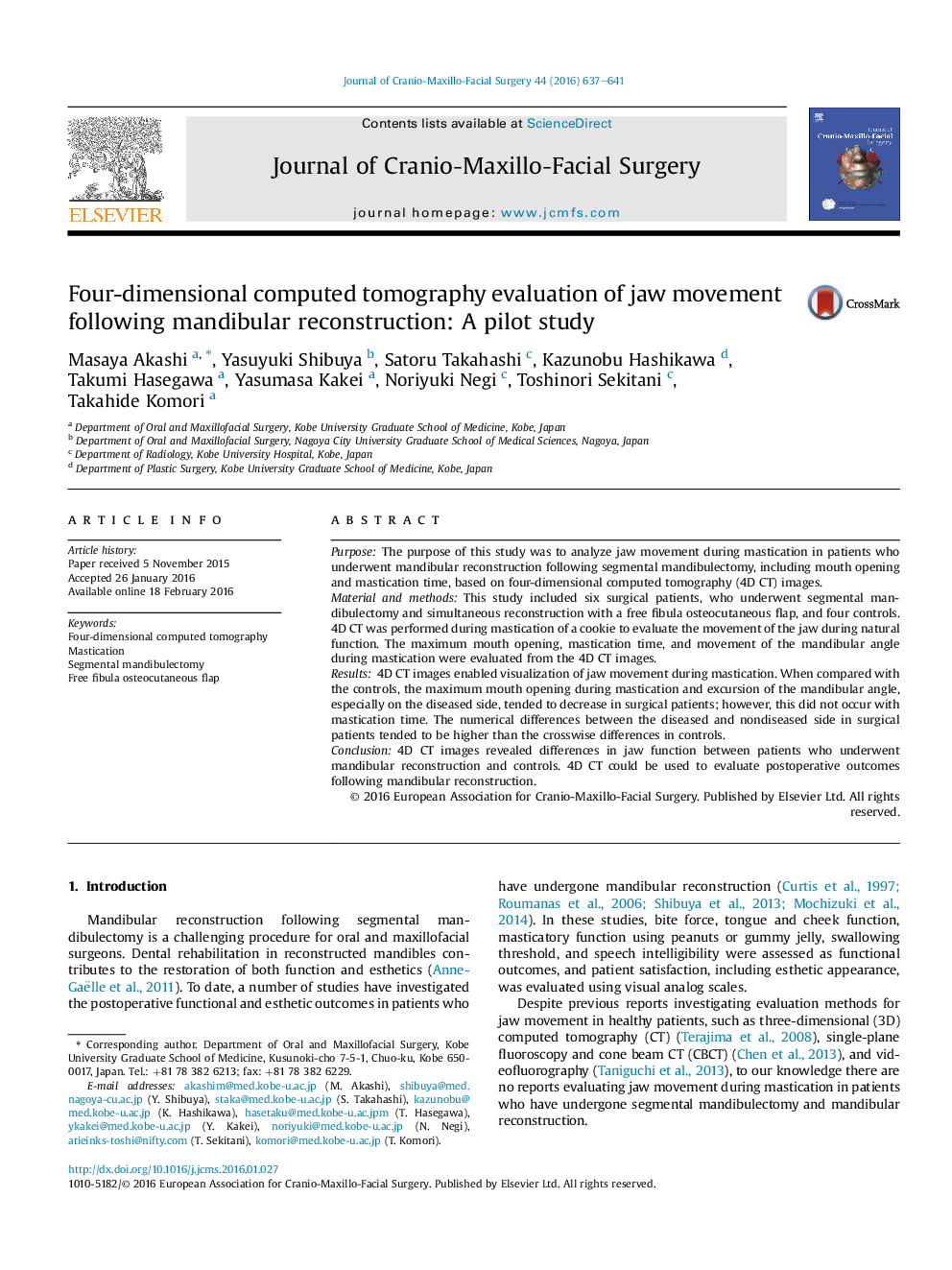| Article ID | Journal | Published Year | Pages | File Type |
|---|---|---|---|---|
| 3142211 | Journal of Cranio-Maxillofacial Surgery | 2016 | 5 Pages |
PurposeThe purpose of this study was to analyze jaw movement during mastication in patients who underwent mandibular reconstruction following segmental mandibulectomy, including mouth opening and mastication time, based on four-dimensional computed tomography (4D CT) images.Material and methodsThis study included six surgical patients, who underwent segmental mandibulectomy and simultaneous reconstruction with a free fibula osteocutaneous flap, and four controls. 4D CT was performed during mastication of a cookie to evaluate the movement of the jaw during natural function. The maximum mouth opening, mastication time, and movement of the mandibular angle during mastication were evaluated from the 4D CT images.Results4D CT images enabled visualization of jaw movement during mastication. When compared with the controls, the maximum mouth opening during mastication and excursion of the mandibular angle, especially on the diseased side, tended to decrease in surgical patients; however, this did not occur with mastication time. The numerical differences between the diseased and nondiseased side in surgical patients tended to be higher than the crosswise differences in controls.Conclusion4D CT images revealed differences in jaw function between patients who underwent mandibular reconstruction and controls. 4D CT could be used to evaluate postoperative outcomes following mandibular reconstruction.
